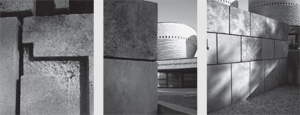|
Simulated Dreams
Israeli Youth and Virtual Zionism Haim Hazan
The return of the prodigal son to his fatherland has been the generative myth upon which
the Zionist claim for and enterprise of homecoming are edified. The motif of the wandering
Jew who terminates his travels in the sanctified land of Israel and is thus transformed
from a nomad to a settler is the core theme in the master narrative of that passage. The
paragon of that pilgrimage, its justification and the bearer of its cross of sacrifice and
redemption, is the archetype of the newly born, indigenous Israeli Jew who supposedly
emerged from nowhere, drawing his strength and might from the elements of his old-new
naturalized homeland.
This image was epitomized in the construction of the fine figure of the young warrior-cumpioneer whose collective memory did not extend beyond the historical horizons of his land. Born and bred on constitutive myths of nation building and national exceptionalism, the youthful protagonist of the Zionist project had to deal with the dilemma of assuming responsibility for life and death without the corresponding authority of political and ideological leadership. This was previously reserved for and maintained by the oligarchy of Zionist elders who held the reigns of both cultural hegemony and organizational dominance. In time, the young cohort of yesterday have become the elders of today, and their own offspring are exposed to the continuous endeavor of engineering collective selves. Prologue from: Simulated Dreams, Israeli youth and virtual Zionism Bergham books, New York Oxford (2000) However, history is ambushing myth, and changes in the spirit of the times spell transformations in identity, priorities, and world-view. Thus, the question of the dynamic relationship between the living experience of the young and the mythical framework and formulae imposed on them becomes a prominent issue in the understanding of contemporary society. Simulated Dreams is an attempt to generate an ethnographically informed discourse pertaining to the Zionist case of that interplay between myth and reality in the lives of young people. I am interested in the concept of youth for its dialectical nature. As the national progeny, “youth” is subjected to extensive socialization; at the same time, youth is characterized by its state of moratorium, a stage of permitted experimentation and expected rebellion. In other words, youth is a life stage in which the forces of collectivism and individualism most blatantly meet (and touch swords). As consumers, young people are the carriers of global culture; yet they also bring to this consumption their own cultural stamp. Israeli youth is a mixture of the local and the global, the Israeli and the Western, the cosmopolitan, the cool. Furthermore, as the age-group most conspicuously targeted by a host of “images of identity”, postmodern Israeli youth is both simulation and reality. The guided tour we are about to take is a multisite, critical ethnography of a contrived “heritage zone” where Zionism and Israeli youth meet. A glimpse into the upcoming program can be gained by paying a brief visit to the campus of my own university - Tel-Aviv University in Israel. Any ordinary university serves as both an institution of learning and a cultural device structuring age and controlling the admission of the young into the adult society. The symbolic provisions offered by the university cater to a double- edged experience of both freedom and rules, intellectual individualism and collective exams. The campus of Tel- Aviv University is no exception to this duality. At the heart of the campus, straddling the departments of the humanities and the exact sciences, there is a striking arrangement of non-academic structures. The original component of this group of three is the Museum of Jewish diaspora- an achronological permanent exhibition of mostly non-authentic items and a virtual display of Jewish existence in exile. Next to the museum lies a memorial pit for fallen Israeli soldiers. The symbolic juxtaposition between the two monuments is selfevident. The virtual museum casts its shadow onto ultimate authenticity: death in battle, the sanctity of the Zionist ethos. Finally, an imposing synagogue verges on the pit, overlooking 2 both the memorial and the holocaust museum. The result could be described as a threefold national narrative of calamity, death, and resurrection. However. The synagogue is not a conventional Jewish house of prayer. Split into two equal scroll-like cylinders, the building is designed to project and reflect the spiritual essence of Orthodox Judaism alongside its spiritual inspirations on other faiths and creeds. Furthermore, the building itself, designed by Swiss architect Mario Botta, is coated with Italian stone and strongly resembles a Catholic church by the same architect in Evry, France. The bottom line of this brief semiotic analysis is that the “heritage zone” in the center of the Tel-Aviv campus is a bricolage. Like youth, its designated audience, this zone represents the dialectics of the local and the global, the familiar and the foreign, the unique and the universal. In the heritage zone, the themes of the Holocaust, the fallen Israeli soldiers and Jewish religion- all hinging on real historical events- are reconstructed and assembled in a manner that replaces reality with a simulation. It is not about youth culture per se, nor is it about inter-generational relations. Even though young people are the readers and performers of the cultural texts to be examined here, the source of these texts (like the source of the “heritage zone”) is the world of adults. The reader should remain alert to the reproduction of power that takes place, and judge for him or herself whether the reality behind the simulation is, ultimately, the usurpation of youth by middle-age society. This assumption is not merely a reflection of some intergenerational cleavage, but a key cue for a critical reading of Israeli culture. It is no coincidence that the figure of the proverbial Sabra- the common icon of traditional Zionism- is customarily depicted as a defiant, cheeky- looking, slovenly, scout-attired, boisterous youth. Add to that similar major cultural idioms ingrained in abundant literature, cinema, plastic arts, and, most importantly, school curricular agenda promoting the trope of the eternally youthful indigenous or pseudo-indigenous Israeli. Israeli society, whose investments in reproductive technologies, prenatal tests, and child rearing expenditures are unprecedented in the Western world, indicates an unequivocal commitment, even obsession, with its young. Patterns of adult behavior such as sing-alongs, speech forms, rituals of collectivity, and playful gestures, are all manifestations of the prevalence of childlike manner among Israelis. Youthfulness and its rhetorics are thus the generative language of Israeli cultural identity. Its produces infantile properties of authoritarianism, blended with playfulness and pedagogic dramaturgical presentations plotted as mythical scriptures accompanying socialization. The purpose- latent or explicit – of this cultural agenda could be explicated in terms of preparation for the ultimate in national identification, for example, army service and its possible aftermath- death at an early age. The construction of the childlike native is thus edified on the notion of, and the need for, unquestionable sacrifice modeled on the binding of the compliant child Isaac. Even though the perseverance of this total expectation is tempered with multicultural experience and postmodern revelry, the ethos of the fearless, intrepid child whose fighting spirit is unshaken by his denied morality is still widely fostered and prevalent. Hence, youth is much more than an age category or a generational stratum; it is an encapsulated epoch symbolically perfected in the immortal Zionist child hero. 
Professor Haim Hazan teaches Social Anthropology at Tel Aviv University. He specializes in old age and
the cycle of life, Total institutions, nationhood and culture.
He has published numerous articles and books, including: The Limbo People (1980), A Paradoxical
Community (1990), Managing Change in Old Age (1992), Old Age: Construction and Deconstruction
(1994),From First Principles (1996), Simulated Dreams (2000)
|
